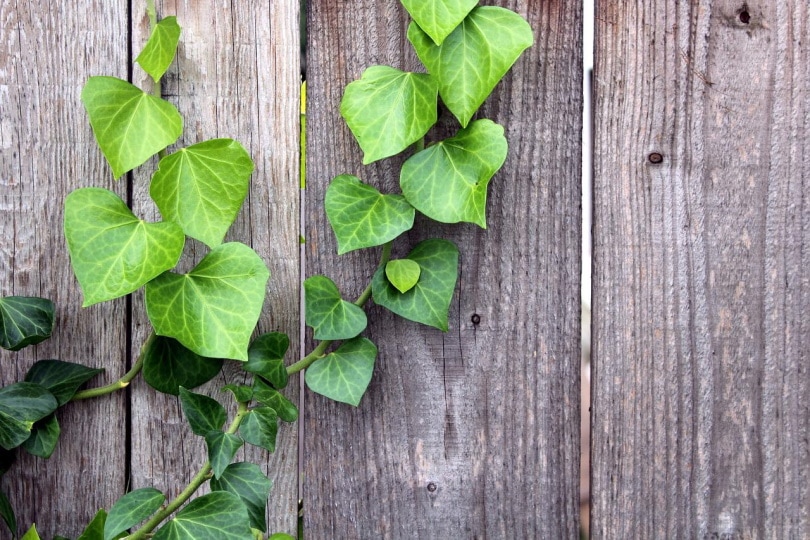Crops could make for an exquisite addition to any dwelling or yard. Not solely do they add to the aesthetic, however additionally they include different advantages resembling growing oxygen and humidity, and even cleaning the air round us. Cats are likely to take pleasure in crops simply as a lot as we do, however for various causes.
As cat house owners, we should do all we will to make sure their security, and realizing which crops pose a hazard to our beloved pets is important. So, is ivy poisonous to cats? Some types of ivy are poisonous to cats, whereas others aren’t. Right here, we’ll speak all about ivy and all issues thought of ivy, in addition to the toxicity risks it may possibly pose.

Cats and Ivy Crops
Ivy is a quite common houseplant that isn’t solely stunning however very hardy and simple to develop. Scientifically talking, ivy consists of about 15 totally different plant species of the genus Hedera. These evergreen woody vines belong throughout the ginseng household, Araliaceae, and are native to Europe and most of Asia.
It is very important understand that there are lots of crops labeled as “ivy” that aren’t true ivy, and that’s the place some confusion units in. When discussing the risks that ivy can pose to cats, the American Society for the Prevention and Cruelty of Animals (ASPCA) database lists a number of plant species below the time period “ivy,” as poisonous. Because of ivy getting used as such a free time period, we’ve supplied the varieties listed as poisonous, whether or not they’re true ivy or not.
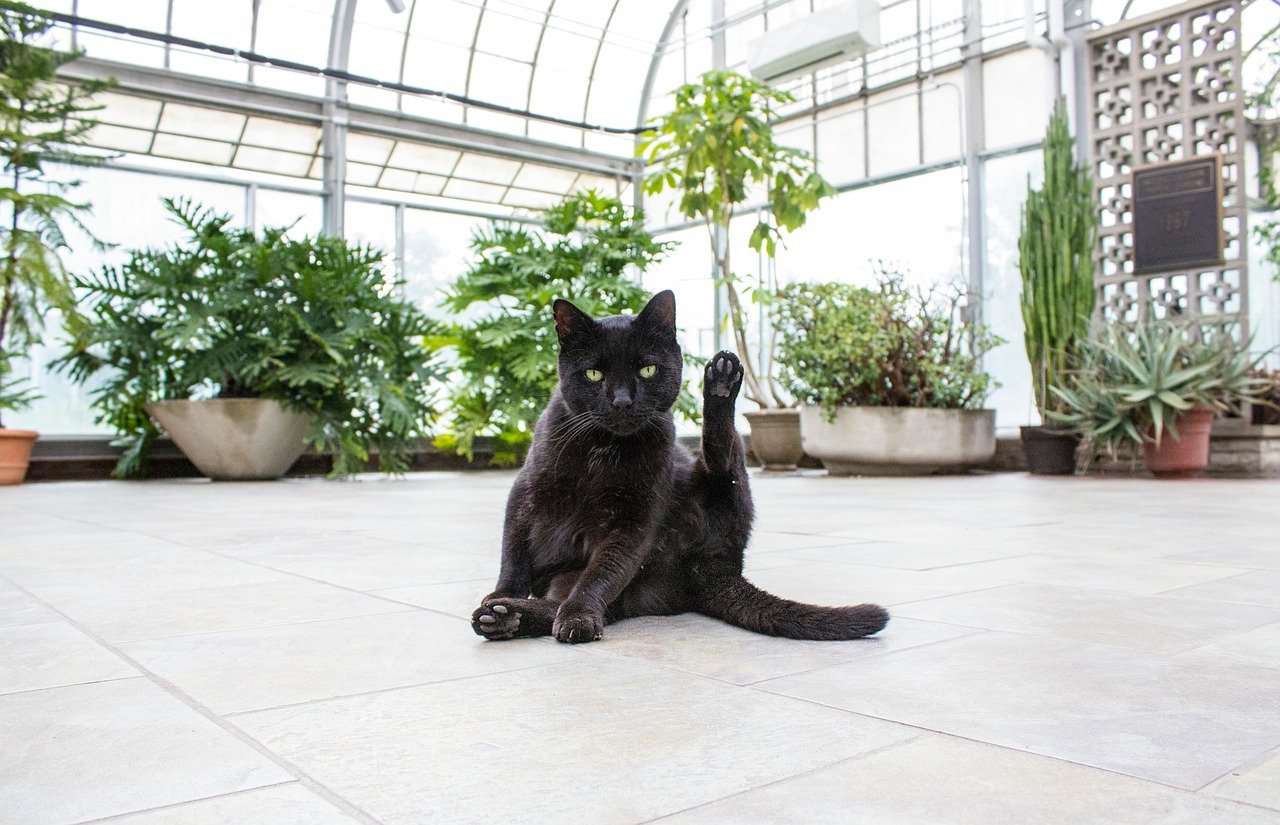
Poisonous “Ivy” Crops
Because of ivy getting used as such a free time period, we’ve supplied a listing of the varieties listed as poisonous, whether or not they’re true ivy or not. In case your cat has ingested or probably ingested any of the next, you’ll need to contact your veterinarian for additional help.
English Ivy (Hedera helix)
English Ivy additionally goes by the names Branching Ivy, Glacier Ivy, Sweetheart Ivy, and California Ivy. This ivy is a really fast-growing perennial vine that isn’t solely a typical houseplant however can also be thought of an invasive species that may shortly overtake its surroundings. English Ivy is taken into account poisonous to cats and might trigger vomiting, stomach ache, extreme salivation, and diarrhea.
Irish Ivy (Helix hibernica)
Additionally recognized by the widespread identify, Atlantic Ivy, this selection is usually confused with English Ivy. With Irish Ivy, nonetheless, the leaves are wider than they’re lengthy and have a broader terminal lobe with shiny leaves and inexperienced veins. Irish Ivy can also be thought of poisonous to cats.
Satan’s Ivy (Epipremnum aureum)
Whereas Satan’s Ivy isn’t thought of true ivy, it’s nonetheless labeled as such and could be very poisonous to cats. This plant can also be generally often known as Pothos, Golden Pothos, Taro Vine, and Ivy Arum. In keeping with the ASPCA, Satan’s Ivy may cause oral irritation, ache and/or swelling of mouths, tongue, and lips, extreme drooling, vomiting, and issue swallowing.
Boston Ivy (Parthenocissus tricuspidata)
Boston Ivy isn’t a real ivy however it’s a perennial woody vine within the grape household. It’s native to japanese Asia together with Korea, Japan, and the northern and japanese areas of China. Additionally known as Japanese Ivy or Japanese Creeper, this plant sports activities reddish leaves within the springtime which flip inexperienced through the summer season. Boston Ivy is taken into account poisonous to cats.
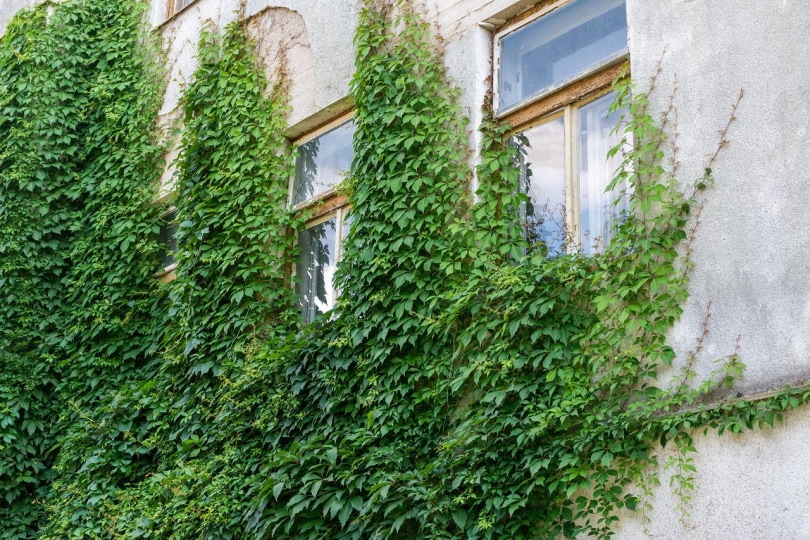
German Ivy (Senecio mikanioides)
Additionally known as Cape Ivy, German Ivy is an evergreen climbing vine that’s native to South Africa. It’s generally used as an accent to flowers and although it isn’t a real ivy, it’s thought of poisonous to cats and might trigger vomiting, diarrhea, extreme salivation, respiratory difficulties, fever, and muscle weak spot.
Mountain Ivy (Kalmia latifolia)
Mountain Ivy is one other identify for the plant selection often known as Mountain Laurel. Different widespread names embody Spoonwood and Calico-Bush. Mountain Ivy is an exquisite flowering plant that’s native to the japanese United States. It’s one other species that doesn’t belong within the class of true ivy however is usually known as such and is poisonous to cats.
Floor Ivy (Glechoma hederacea)
Floor Ivy is a perennial, evergreen creeper that belongs to the mint household, Lamiaceae, and is taken into account poisonous to cats. It is vitally fragrant and goes by a number of names together with Creeping Charlie, Gill-Over-the-Floor, Run-Away-Robin, Alehoof, Tunhoof, Catsfoot, and Area Balm.
Australian Ivy Palm (Schefflera or Brassaia actinophylla)
The Australian Ivy Palm is an umbrella tree that’s native to Australia and New Guinea. It may well develop as much as 50 ft in its pure habitat however may be stored as an indoor plant with correct pruning. This plant is taken into account toxic to cats.

Non-toxic “Ivy” Crops
Swedish Ivy (Plectranthus australis)
Regardless of the widespread identify, Swedish Ivy isn’t a part of the true ivy genus Hedera. Swedish Ivy has been standard as a houseplant since across the Nineteen Forties. It’s nice for freshmen and it thrives in a wide range of soil, watering, and totally different mild circumstances. Not solely that however it is usually thought of non-toxic to pets, making it an much more supreme selection.
Grape Ivy (Cissus rhombifolia)
Grape Ivy will get its identify resulting from its resemblance to grapevines. It additionally produces small, darkish berries that even resemble grapes. Grape Ivy isn’t a real ivy in any respect, it belongs to the identical household as grapes, the Vitaceae household. Grape Ivy is non-toxic to cats and makes a fantastic selection as both potted or hanging houseplants.
Kenilworth Ivy (Cymbalaria muralis)
Also called Coliseum Ivy, Oxford Ivy, and Ivy-Leaved Toadflax, Kenilworth Ivy is a flowering plant native to the Mediterranean. This quick perennial sometimes grows as floor cowl or alongside rocks and partitions however can simply be stored as a houseplant. Whereas not a real ivy, this plant is taken into account non-toxic to cats.
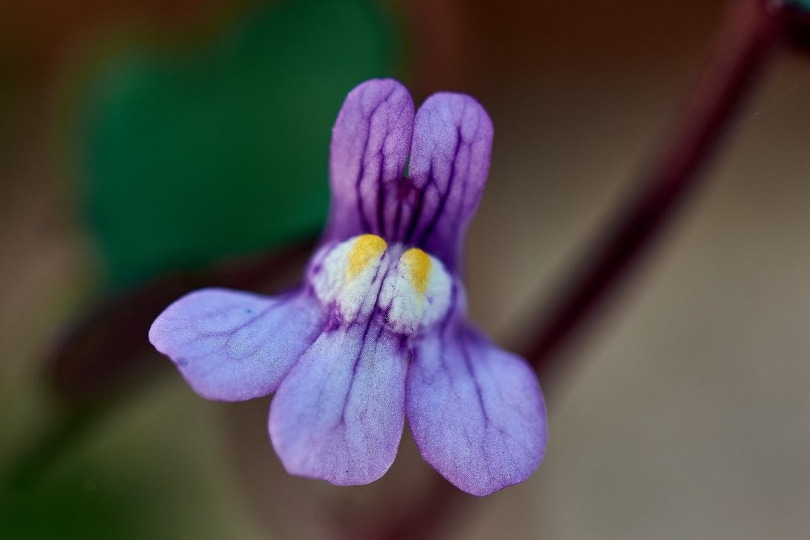
Ivy Peperomia (Peperomia griseoargentea)
Ivy Peperomia is a species of flowering plant that’s native to Brazil. It belongs to the household Piperaceae and is an evergreen perennial that produces rosettes of heart-shaped silverish-gray leaves with pronounced, curvy veins. Ivy Peperomia isn’t a real ivy and isn’t poisonous to cats.
Poison Ivy (Toxicodendron radicans)
One of many first crops to come back to thoughts once you hear the phrase “ivy” is Poison Ivy. We people keep away from this plant just like the plague because of the well-known, itchy, uncomfortable rash that outcomes from contact with the plant. One other plant that isn’t a real ivy, you’ll suppose that Poison Ivy could be poisonous to cats and although it has been included on poisonous plant lists, it’s really thought of non-toxic to cats if ingested. Actually, cats rarely undergo the contact dermatitis related to Poison Ivy coming involved with the pores and skin.
Spider Ivy (Chlorophytum comosum)
Spider Ivy is a perennial evergreen flowering plant within the household Liliaceae. It will get its identify from its spider-like foliage and is one other species that isn’t thought of a real ivy. Additionally known as the Ribbon Plant, Spider Ivy is a well-liked family plant that’s thought of non-toxic to cats.
Indicators of Toxicity in Cats
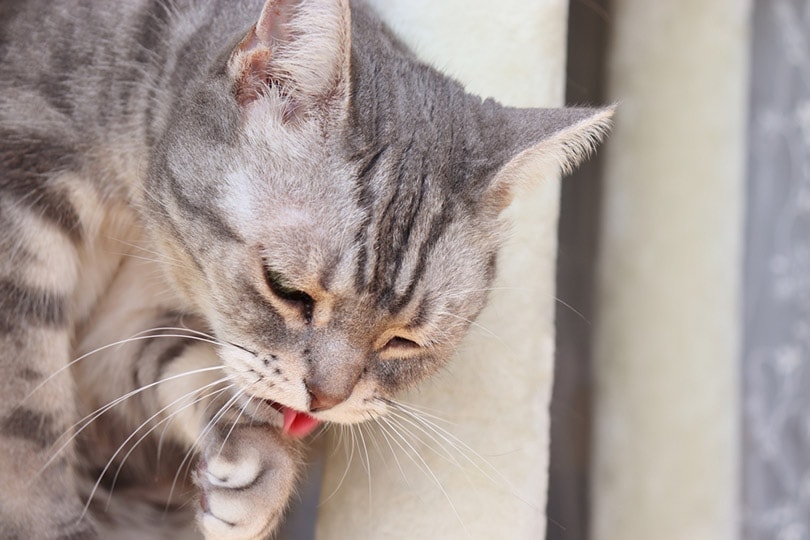
Completely different crops have various ranges of toxicity, when you suspect your cat has ingested a poisonous plant, it’s good to contact your veterinarian or a pet poison management middle instantly, even when they don’t seem to be but exhibiting any signs. Relying on the circumstances, your cat could or could not should be taken to a neighborhood clinic or animal emergency facility instantly.
Potential signs of ingesting a poisonous plant embody:
- Itchiness, scratching
- Swelling
- Crimson, watery eyes
- Irritation across the mouth
- Extreme salivation
- Vomiting
- Diarrhea
- Respiratory difficulties
- Irregular heartbeat
- Drooling
- Issue swallowing
- Fever
- Frequent Urination

Maintaining Your Cat(s) and Plant(s) Protected
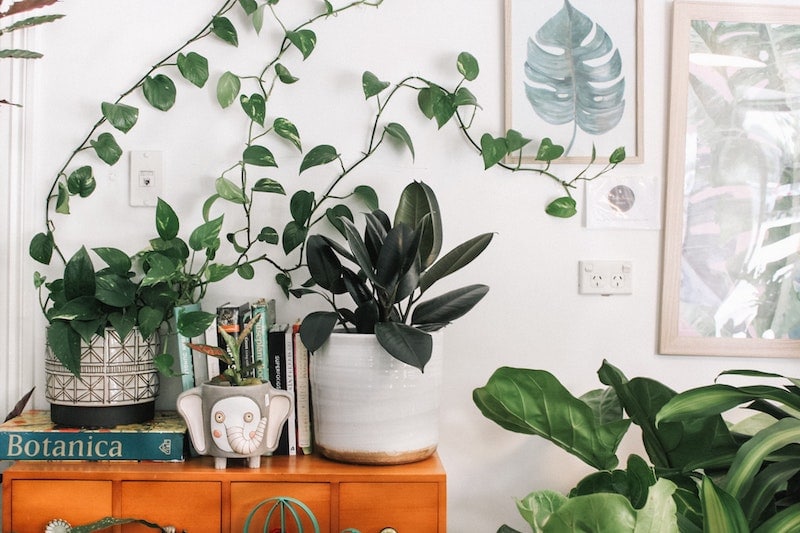
Having a cat doesn’t imply that you simply can not have houseplants. You’ll simply should be extra vigilant and take additional steps to make sure your cat is secure from potential toxins. We’ve included some ideas you possibly can comply with to assist preserve your cat secure.
Keep away from Poisonous Crops
It could go with out saying, however the best technique to preserve your cats secure from any sort of plant toxicity is by avoiding any poisonous plant species. Earlier than you buy any new crops, test to see if that species is taken into account poisonous. There are such a lot of totally different species that resemble one another, that you simply might be able to discover a unhazardous plant that provides you an analogous look with out being dangerous if ingested by your cat.
As for cats which might be allowed to enterprise outdoor, know what’s in your yard and any neighboring yards, and do your finest to make something poisonous inaccessible. With outside cats, it’s way more difficult if they’re left unsupervised and free to roam.
Preserve the Crops Out of Attain
For the sake of each your cat and your crops, attempt preserving any houseplants up and out of attain of your kitty. Crops are ever-so-tempting to chew and play with. Maintaining them out of attain won’t forestall your cat from any points related to ingestion however can even save your plant from extreme injury.
Strive Utilizing Deterrents
Citrus is a common deterrent for cats because of the scent, in addition to sizzling chili oil. Cats aren’t huge followers of citrusy or spicy scents and can sometimes keep away from something that smells like such. Use warning when spraying crops with citrus, because the acidity in citrus fruit juices may trigger hurt to some crops. Vinegar is one other potential deterrent that comes with the identical threat.
You can too attempt using a twig bottle of water to present your cat a fast spritz if it goes wherever close to the family crops. This may increasingly not work for all cats, and you’ll not at all times be out there to make use of this trick, so that is only a fast, in-the-moment deterrent.
Buy Cat Grass or Catnip
Strive shopping for your cat their very own plant. Cat grass and catnip may be bought both on-line or at your native pet retailer. These crops are completely secure for cats to chew on, ingest, and make a fantastic selection for people who have cats that may’t appear to remain out of their crops. Although these two crops are unrelated, they each develop simply and don’t require a inexperienced thumb.
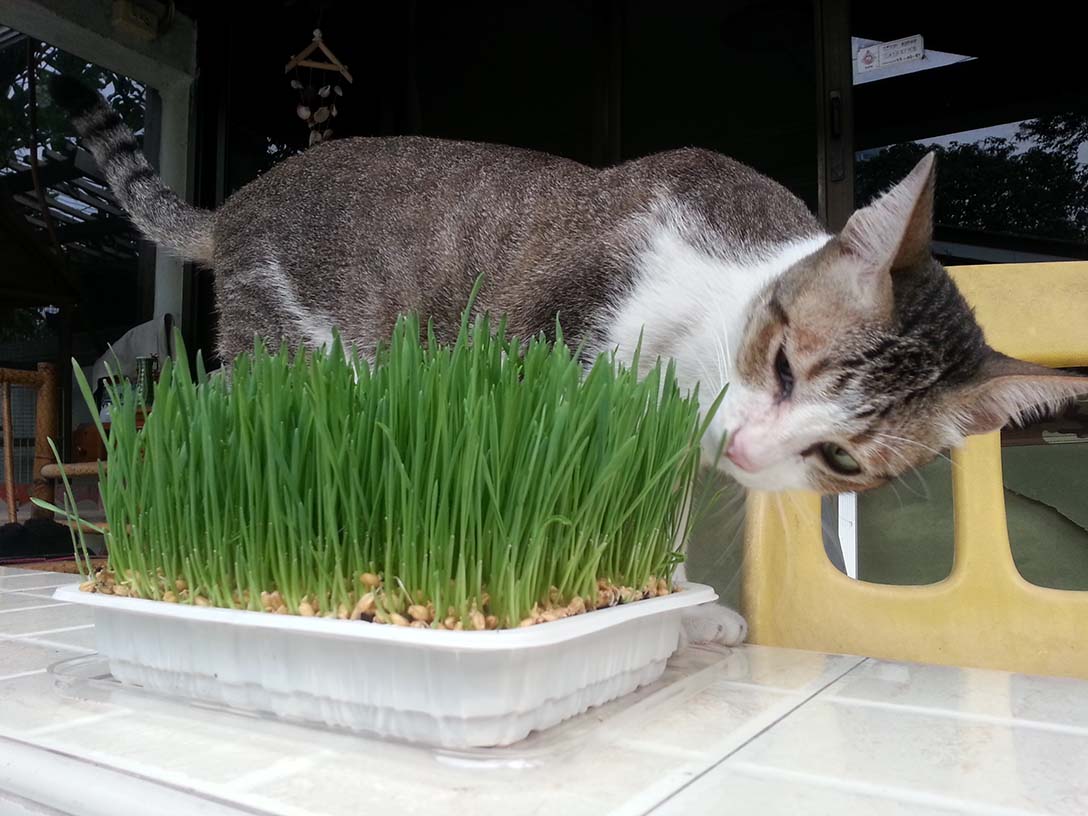
Prune the Crops
In case you preserve your crops well-trimmed or pruned often, it may possibly assist cut back dangers of ingestion or injury to the plant, particularly these varieties with dangling foliage. Lengthy, flowing plants are a tough temptation to withstand when you’re a cat.
Designate a Plant Room
Some plant lovers which might be additionally cat house owners have opted to create their very own plant room or separate greenhouse. Having a separate space for the crops that’s fully inaccessible to cats won’t solely assist you to preserve no matter plant varieties you would like; it ensures your cat is safely away from any potential risks. Not everybody could have the out there house for this selection, however it’s one thing to think about for people who do or people who want to attempt to put aside some additional house.
Purchase Synthetic Crops
Synthetic crops make a superb selection for these which might be solely utilizing crops as dwelling décor. Synthetic crops received’t present the identical advantages as stay crops, however they’re made to look indistinguishable from residing crops they usually don’t require all of the care and upkeep.

Conclusion
Ivy is used as a free time period that refers not solely to true ivy crops however many different species exterior the true ivy genus of Hedera. Some ivy crops, just like the English Ivy, are poisonous to cats, whereas others aren’t. It’s best to proceed with warning and at all times test the specific species of plant and its toxicity to pets earlier than deciding to buy. In case you ever suspect your cat could have ingested or are available in contact with a poisonous number of crops, it’s good to contact your veterinarian instantly for steerage.
Featured Picture Credit score: _Alicja_, Pixabay
